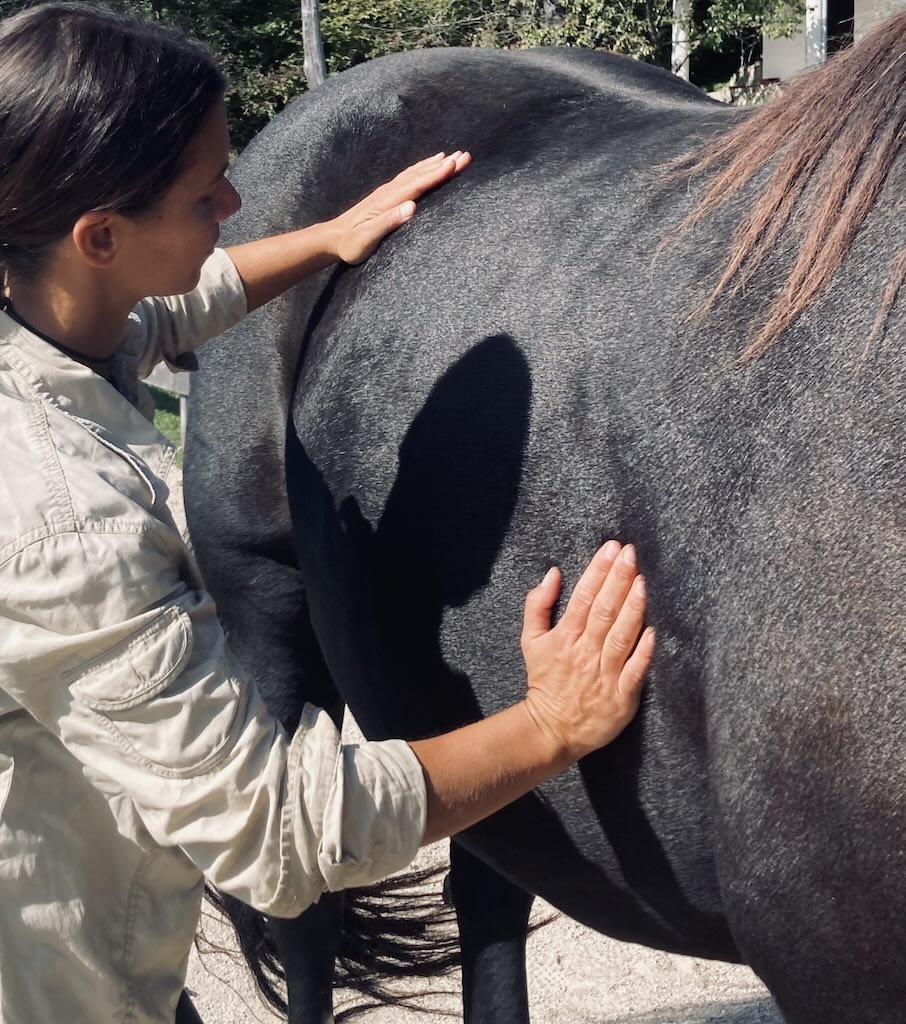Taking care of the ribcage
Try these two bodywork techniques to restore range of motion and enable to ribcage to function better.
The ribcage is attached to the spine and thus plays an important role in the biomechanics of the horse’s back.
When it comes to recognising dysfunction and pointing out the problematic areas in the horse's body, the ribcage is often overlooked. We talk about the thoracic sling, about the pelvis and the back, but the ribs are hardly ever mentioned. But we shouldn't forget that the ribs are directly attached to the spine itself. We shouldn't forget that the diaphragm (which attaches to the ribs) shares an attachment to the psoas muscle, influencing the hind end. And we shouldn't forget that the first few ribs are very, very closely connected to the base of the neck and the thoracic sling. So, if we want the body to function well, the ribcage needs to function well too. But what does that mean?
Obviously, the function of the ribcage is to protect the sensitive inner organs, such as the lungs and the heart. And even though it might seem like a structure with little to no biomechanical implications, it does actually need to be able to move. As the horse breathes, the ribcage expands and contracts. As the horse bends his spine, the ribcage needs to bend with it, otherwise bending is impossible. There are many reasons why we see a limited range of motion in the horse's ribcage, including breathing problems, pelvic dysfunction, rib fractures, poor saddle fit, chronic stress... The list is a long one. If your horse has ever had a psoas issue, chances are, the diaphragm will have problems too. And if the diaphragm is tight, the range of motion of the ribcage will be limited. A similar thing can be said if your horse has ever had a back issue. Whatever the problem is, the ribcage is worth addressing too.
Here are two simple bodywork techniques you can try with your horse to give some love to the ribcage and enable it to move more freely. In the first one we will be working on the soft tissue in between individual ribs. I like to start just behind the last rib and move forward. Locate the last rib and place your fingertips just off the distal part of the rib. Then gently move the tissue upwards. Use as much pressure as you would need to move the skin on your forearm over the muscle tissue, but no more than that. Slowly work your way up until you reach the shelf of the ribs. You will feel this as a sudden inward bend of the rib. Then move on to the next space between the last and second-to-last rib and do the same. Take your time – about 30-60 seconds for each space and continue doing that until you get to the girth area. Then repeat on the other side.
Gently move the soft tissue between two ribs upwards.
With the second technique, we will be addressing the range of motion of the ribcage as a whole. Place one hand on the last few ribs and the other one on the front end of the ribcage. As you inhale, bring your hands closer together and imagine the ribcage and the spine bending to the direction you're working on. With an exhale, let it go. Repeat a few times until you get a nice rhythm going. The range of movement should be very small, so we stay under the horse's bracing radar. If the horse tenses up, make the range of motion even smaller. Repeat on both sides and compare how they feel.
Make sure to keep the range of motion small in order to stay under the horse’s brace radar.
This technique can be a very powerful one, but it does require an environment in which the horse can relax. If the horse's mind is elsewhere the effect won't be as great. Do these two exercises every day for a week and see if our horse feels different under the saddle. You'll be surprised at how effective such gentle movements can be.
Associated content:


